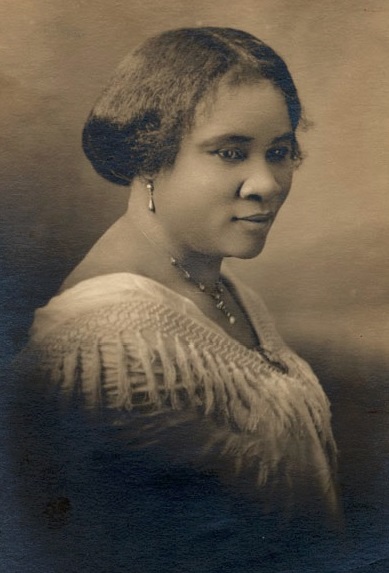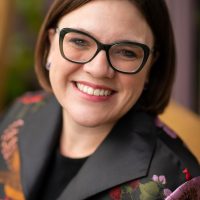
{*Did you know you can write on Elephant? Here’s how—big changes: How to Write & Make Money or at least Be of Benefit on Elephant. ~ Waylon}
~
Madam C.J. Walker. Muriel Siebert. Sallie Krawcheck. Rosa Rios. Are these names familiar to you? Women’s History Month is a chance to name the unsung leaders who enabled my generation to step into our power as women investors and financial decision-makers.
Sometimes we forget that it wasn’t so long ago that women were legally and culturally barred from meaningful financial relationships. My grandmothers grew up in a culture where economic stability could only be found in marriage. When my mother was born, women couldn’t open a bank account in their own name without a signature from a husband or father.
Let me be clear—I’m a 36-year-old Millennial. My mother is a young Baby Boomer. Financial independence is a thoroughly modern phenomenon for American women.
It wasn’t until the Equal Credit Opportunity Act (ECOA) was passed by Congress in 1974 that women had access to credit cards, mortgages, or even a bank account in their own name. Before ECOA passed, many banks required single, divorced, or widowed women to bring a man along with them to cosign for a credit card and even discounted the wages of women by as much as 50 percent when calculating their credit and limits.
To put it into historical perspective, when Janet Yellen, the current US Treasury Secretary, graduated with a Ph.D. in economics from Yale University in 1971, she likely would have been considered uncreditworthy unless she had a male co-signer on the credit application.
What a time to be a woman.
After ECOA passed in 1974, however, we saw women explode onto the financial scene:
>> In 1974, the first women’s bank was opened by Judy H. Mello.
>> In 1977, Alexandra Armstrong becoming the first woman to earn the Certified Financial Planner (CFP®) certification in Washington, DC.
>> In 1984, Rosemary McFadden became the first woman president of a US stock or futures exchange, when she was made president and CEO of the New York Mercantile Exchange.
Despite all this forward momentum of professional financial heroes, today’s women face myriad of economic barriers in their personal lives. Women typically earn 82 cents for every dollar earned by men. Black women earn 64 cents for every dollar a White man earned in 2022. Childcare costs are skyrocketing, pushing women to leave the workforce when daycare expenses outstrip their take-home pay.
Even worse is the prevalence of economic violence against women. Today in the U.S., one in four women will experience severe intimate partner violence in their lifetime. Horrific enough on its own, between 94 – 99% of domestic violence survivors have also experienced economic abuse, which happens when the abusive partner has total control over their partner’s financial assets and/or profile.
In everyday language, economic abuse means that harm-doers, on average, steal $1,280 from their intimate partner each month, incur $15,936 in coerced or fraudulent debt in their partner’s name each year, and incur $17,770 in property damage costs each year. Harm-doers restrict access to joint bank accounts and credit card purchases. Survivors must ask permission to use their own money for any purchases.
Economic abuse means financial ruin and total dependence on the harm-doer for any financial needs.
As a parent, I force myself to realize that economic abuse is even more prevalent than relationships that escalate to physical violence. I think of friends who thought their credit card was stolen when they entered a new relationship only to find out their new boyfriend helped himself to her wallet. I think of friends who always pause to ask their spouse if they could join a friend group to watch a movie. I think of family members who have never accessed their own bank account.
Non-profits and research institutions that study economic abuse report that the more realistic statistic is that 1 in 2 women experience some form of economic abuse in their lifetimes.
I have two daughters.
That probability is unacceptable to me.
So I educate all three of my children on financial fundamentals like safe banking practices, the importance of credit history and credit usage, service fees, rent and mortgage structures, interest rates, and investment growth.
I need them to understand the baseline of healthy financial relationships so they will know when something feels wrong, however subtle. I need them to know that women aren’t second-class citizens in financial conversations.
I want them to aspire to the heights of what’s possible rather than to avoid the depths of nightmare scenarios. I need my children to see female financial heroes who raise the standard of what is possible for girls and women to achieve.
This Women’s History Month, I’ll be teaching my children how Sallie Krawcheck built a woman-first financial company in 2014, even when she and her team were told “women don’t need their own investing platform.” I’ll teach them how Madam C.J. Walker became the first female self-made millionaire in America by developing a and marketing a line of cosmetics and haircare products for Black women and how Muriel Siebert is known as “The First Woman of Finance” for her leadership on the New York Stock Exchange. I’ll teach them how Rosa Rios implemented the American Recovery and Reinvestment Act after the 2008—2009 financial crisis.
I’ll be teaching them women’s financial history while hot-glueing a lace collar to Susan B. Anthony’s black dress and wrapping green pipe cleaners around artificial flower stems for Frida Kahlo’s hairstyle. I believe Susan and Frida would appreciate the implications of girls learning how to finance their own future.
*This article is inspired by Andrea Longton’s book, The Social Justice Investor (April 23, 2024).

~
{Please consider Boosting our authors’ articles in their first week to help them win Elephant’s Ecosystem so they can get paid and write more.}











Read 2 comments and reply